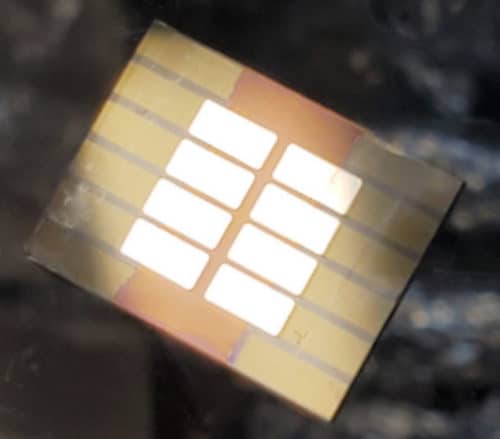“Imagine that one day, solar cells are as cheap as newspapers, and you could fold one up and carry it around in your backpack”
Researchers at the University of Illinois at Urbana-Champaign are the first to notice chirality appearing in achiral conjugated polymers, which are used to make flexible solar cells. Their research could aid in improving the charge capacity of the cells and expanding access to affordable renewable energy.

“Chirality is a fascinating biological property,” said Ying Diao, an associate professor of chemical and biomolecular engineering and the study’s principal investigator. “The function of many biomolecules is directly linked to their chirality. Take the protein complexes involved in photosynthesis. When electrons move through the proteins’ spiraled structures, an effective magnetic field is generated that helps separate bound charges created by light. This means that light can be converted into biochemicals more efficiently.”
Scientists have discovered that molecules with similar structures tend to stick together: chiral molecules form chiral structures (like nucleic acids creating DNA) and achiral molecules form achiral structures. Diao and her coworkers saw something unusual. Achiral conjugated polymers can deviate from the norm and assemble into chiral structures under the correct conditions.
The researchers made their discovery by mixing achiral conjugated polymers with a solvent. They then dripped the fluid onto a microscope slide one drop at a time. The solution became more concentrated as the solvent molecules evaporated, leaving the polymers behind. The compressed achiral polymers began to self-assemble into structures quite quickly.
“Now that we’ve unlocked the potential for chiral conjugated polymers, we can apply that biological property to solar cells and other electronics, learning from how chirality enhances photosynthesis in nature. With more efficient organic solar cells that can be manufactured so quickly, we can potentially generate gigawatts of energy daily to catch up with the rapidly increasing global energy demand,” Diao said.
Their paper opens up new research possibilities at the intersection of biology and technology. For the first time, scientists can impart chiral structure to a wide range of materials that rely on achiral conjugated polymers to work. Solar cells are paper-thin solar panels that have been reduced down to the size of a computer screen. The flexible cells are made completely of organic materials and are translucent and light enough to adhere to a bedroom window. They can also be produced quickly using solution printing, which is similar to how newspapers are printed.








